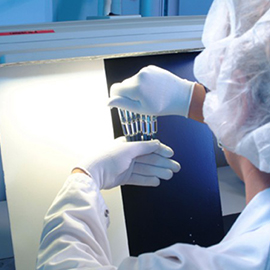 Small volume parenteral packaging includes packaging sizes from 2 to 5 mL range and is most commonly included with local anesthetics, vaccines and other traditional injectables for patients. Small volume parenterals are used with a luer lock or luer slip that can directly connect to syringes.
Small volume parenteral packaging includes packaging sizes from 2 to 5 mL range and is most commonly included with local anesthetics, vaccines and other traditional injectables for patients. Small volume parenterals are used with a luer lock or luer slip that can directly connect to syringes.
10 to 100 mL containers are typically used for multi-dose applications and are designed differently to allow multiple syringe entries. These containers are designed with a multi-entry rubber stopper or controlled diameter, an injection molded insert.
In small volume parenterals, a syringe can be connected directly to the ampoule without a needle. This delivery method is created to be safer for single-use injection. In the past five years, parenteral packaging has changed and will continue to do so. It is stated that there will be more pre-filled/ ready-to-use containers, improved efficiency with filling/ closing operations, more stringent quality requirements, leading to fewer counterfeit products and quality problems. There will be less human interaction when filling/ finishing the products.
With InQuest Science’s Identifier software, this could easily help with the transition of the parenteral packaging alterations and changes. The Identifier will improve quality issues, by holding standard requirements for inspection process of a parenteral drug; in addition to tracking and trending all defects and products that do not meet the regulatory requirements.
To read more about Pharmaceutical Parenteral Packing Systems read the full article published by Pharmaceutical Online or Pharmtech.com

